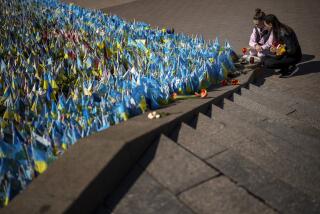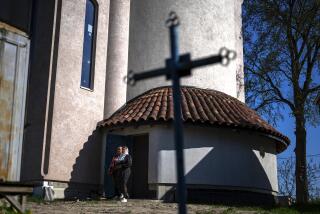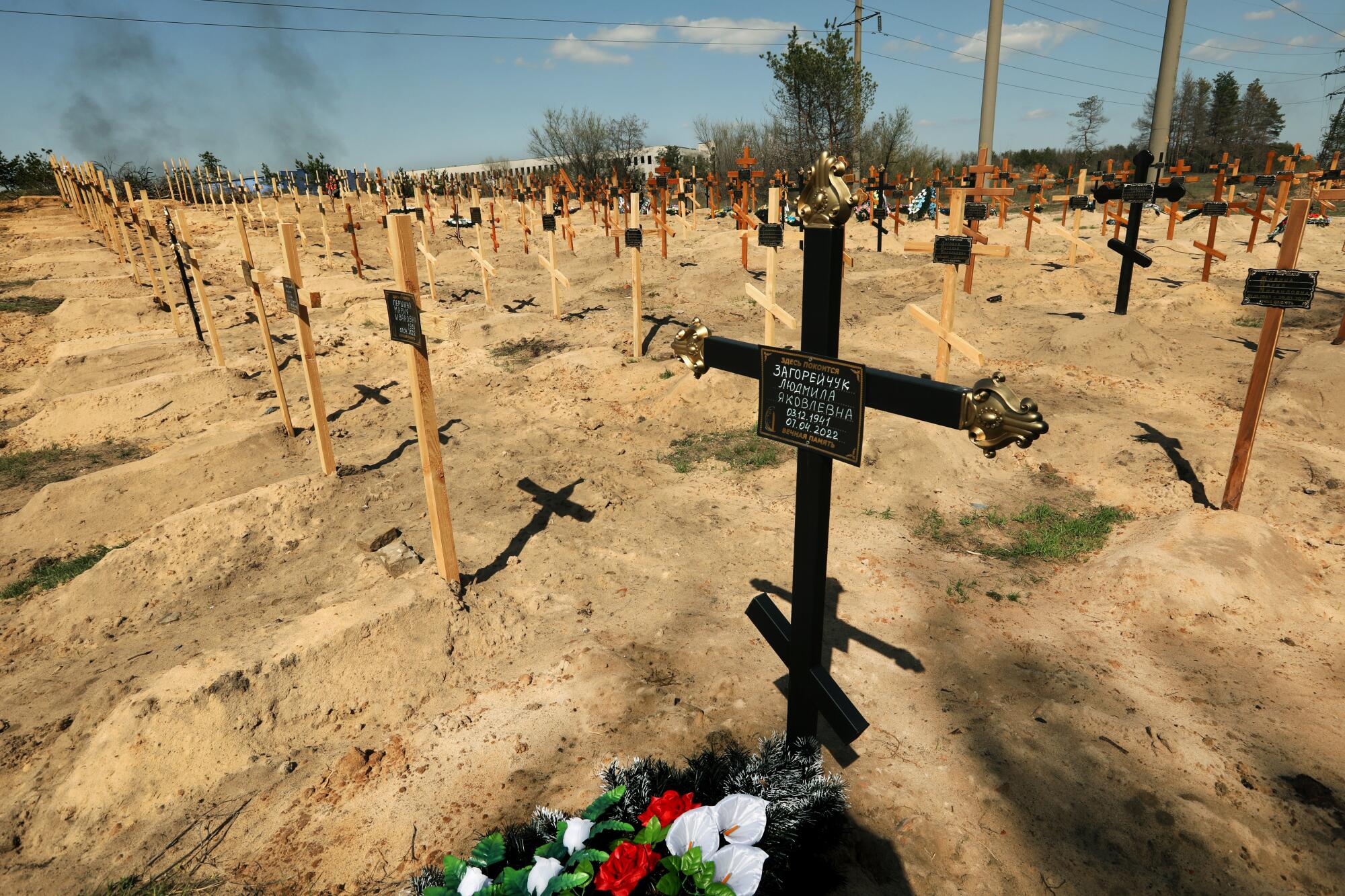
- Share via
SEVERODONETSK, UKRAINE — The rows of graves were marked with simple crosses of fresh-cut wood. Black plaques with gold lettering declared the names. The occasional wreath broke the monotony of dull earthen colors, and, in the front, three rectangular holes awaited the newly fallen.
“How many graves? I don’t know. Go count them,” said the caretaker of this cemetery on Severodonetsk’s southern edge, which started to grow when Russia began its invasion of Ukraine. “We’re digging new ones almost every day now.”
In the escalating fight over eastern Ukraine, Russia’s army — after consolidating and redeploying its forces from other parts of the country, including the capital, Kyiv — has renewed its thrust to seize the Donbas region. Fresh destruction is wreaked daily on communities battered both by nearly eight years of war against Moscow-backed separatists as well as this latest onslaught the Russians call a “special military operation.”
Russia’s strategy is to encircle the east and close in on Ukrainian forces. That has placed Severodonetsk, the easternmost tip of Ukrainian government control in the Donbas, as well as the city of Slavyansk, some 40 miles to the west on the strategic M03 highway, at the top of Moscow’s target list.
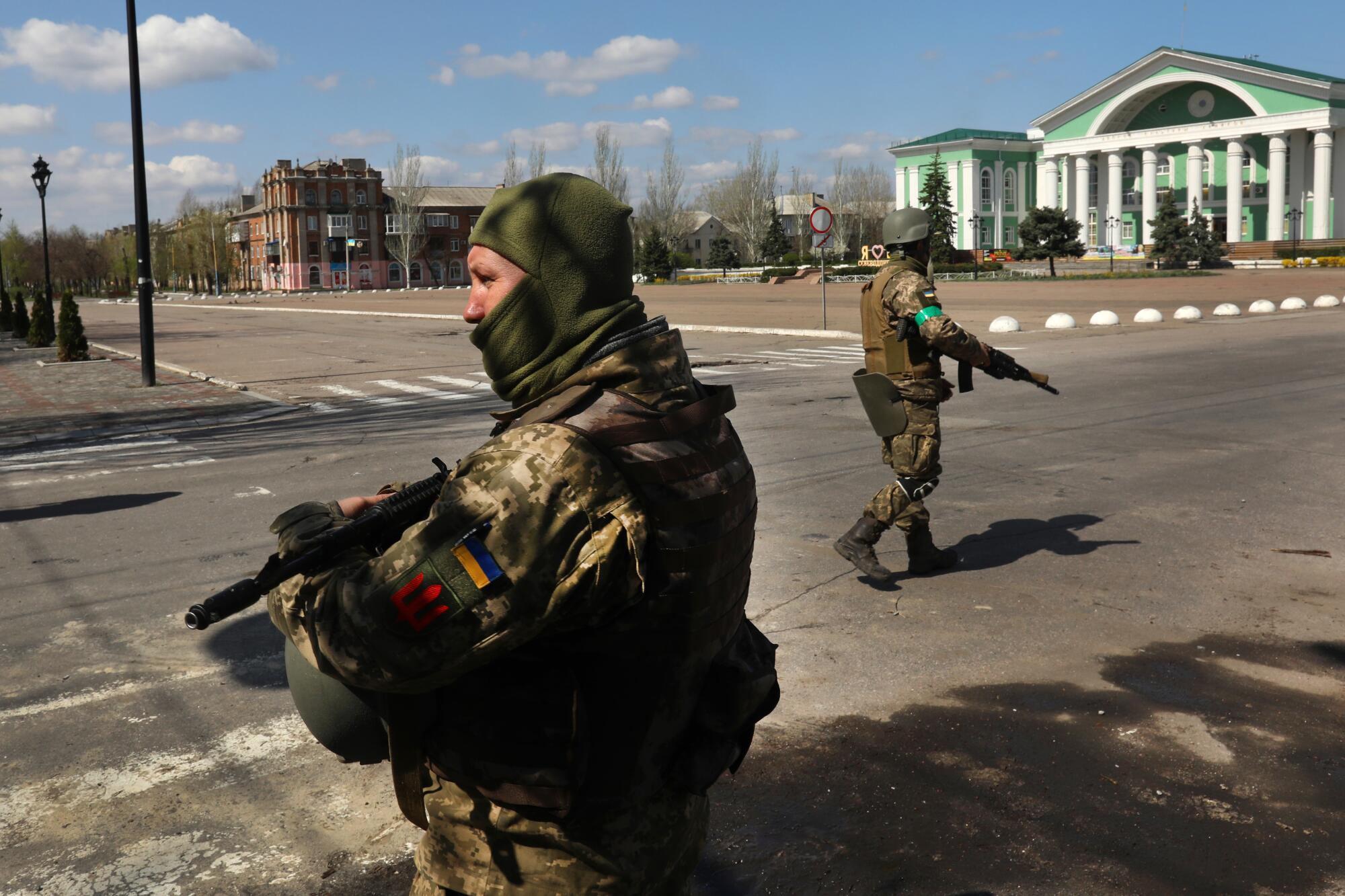
The main fear for residents here is that Russia will attempt to shell this region into submission as it is doing in the southern port city of Mariupol. With the growing certainty that the vise is closing — Russian troops on Friday fought Ukrainian soldiers for control of a town just over a mile northwest of Severodonetsk — many have already escaped. Only a fifth of Severodonetsk’s 106,000 people and possibly a quarter of Slavyansk’s 111,000-strong population have stayed put, authorities say.
Those who remain endure a surreal existence under increasingly lethal skies.
The few who brave the streets of Severodonetsk keep one eye on the ground as they pick their way past artillery-ravaged buildings, mangled cars and low-hanging power lines. Sounds of destruction echo around them. Some ride a bicycle or walk their dog near the large square in front of the city council, past a crater with the remains of a rocket still inside. Wary soldiers, stationed with their rifles at the corner behind stacked sandbags, watch them go, fingers on trigger guards.
War makes suspicion even of neighbors. After more than fifty days of fighting, some, like Vladimir Kadavy, 49, a thin, shabbily-dressed man who worked as a caretaker maintaining Severodonetsk’s public spaces, seemed inured to the erratic drumbeat of missiles and shells playing above.
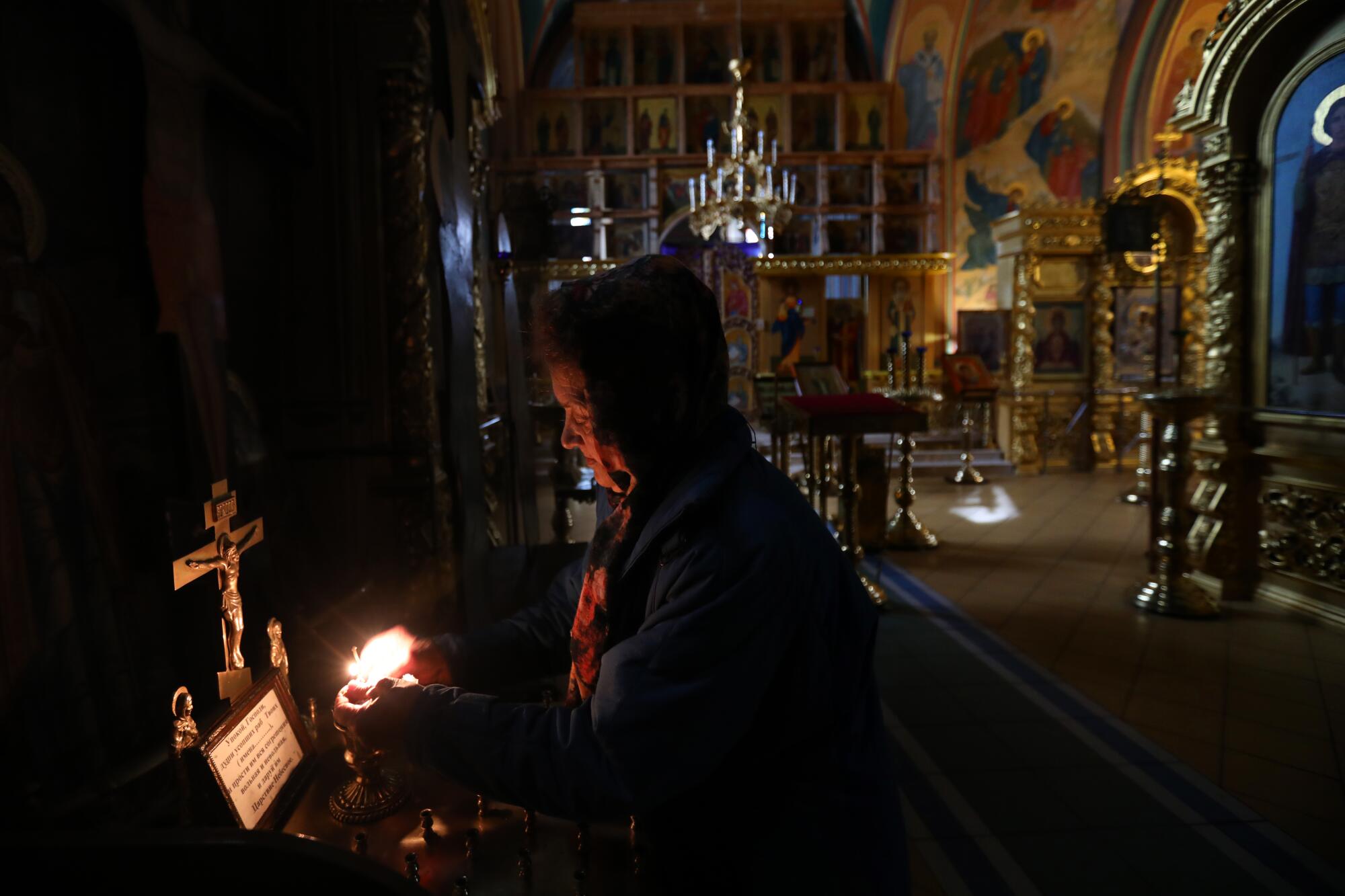
“I don’t have a basement or anywhere to shelter. I’m not afraid anymore. I hear this every day,” said Kadavy, his tired eyes unflinching as a thunderclap of artillery sounded.
He looked around the square, his voice tinged with sadness. The places he had spent much of his life keeping beautiful now lay in ruin. His boss told him that he would be evacuated in three days, but Kadavy, like many others interviewed, thought he would be at a loss if he left his hometown.
“If we go, who cares about us?” he said. “I was born here. Somehow I will survive here, I think.”
Though they did not display the same equanimity, Yura Alforov and his wife, Olga, didn’t want to leave either.
“We’re not calm about this. We just want peace,” Olga said.
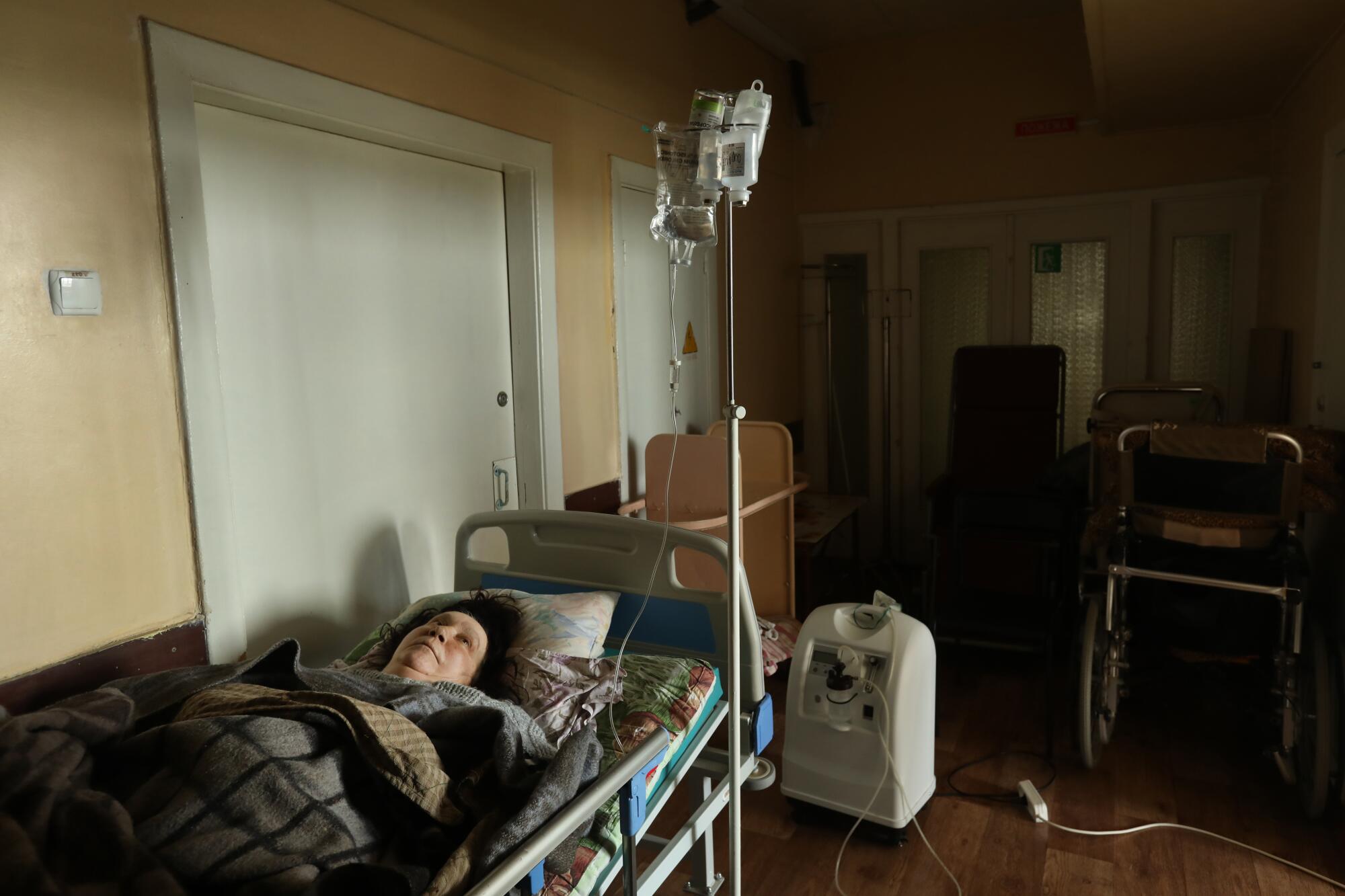
The couple were on the way to the hospital, which was even closer to the front line. Yura, an electric maintenance engineer who had moved to Severodonetsk in 1984, had sprained his ankle while rushing to the basement during a shelling.
“We don’t have money to go, and have no place to go to anyway. How would we live if we left?” Alforov said. He took off his glasses and wiped away a tear.
The choice to stay is hard, but the decision to leave one’s home carries its own uncertainty.
Miles to the west, on a grimy corner near the Slavyansk train station, where a trio of stray dogs growled at each other over a scrap of food, Yuri Kovalenko, a 58-year-old coal miner, waited for the bus that would take him and his family to safety.
Two hours before, he had left his wife back at their farm in the mining town of Gorskaya, bringing with him his daughter Yulia and his two grandchildren, Dmitri, 7, and 5-year-old Igor. They were going to his sister’s place near Chernihiv.
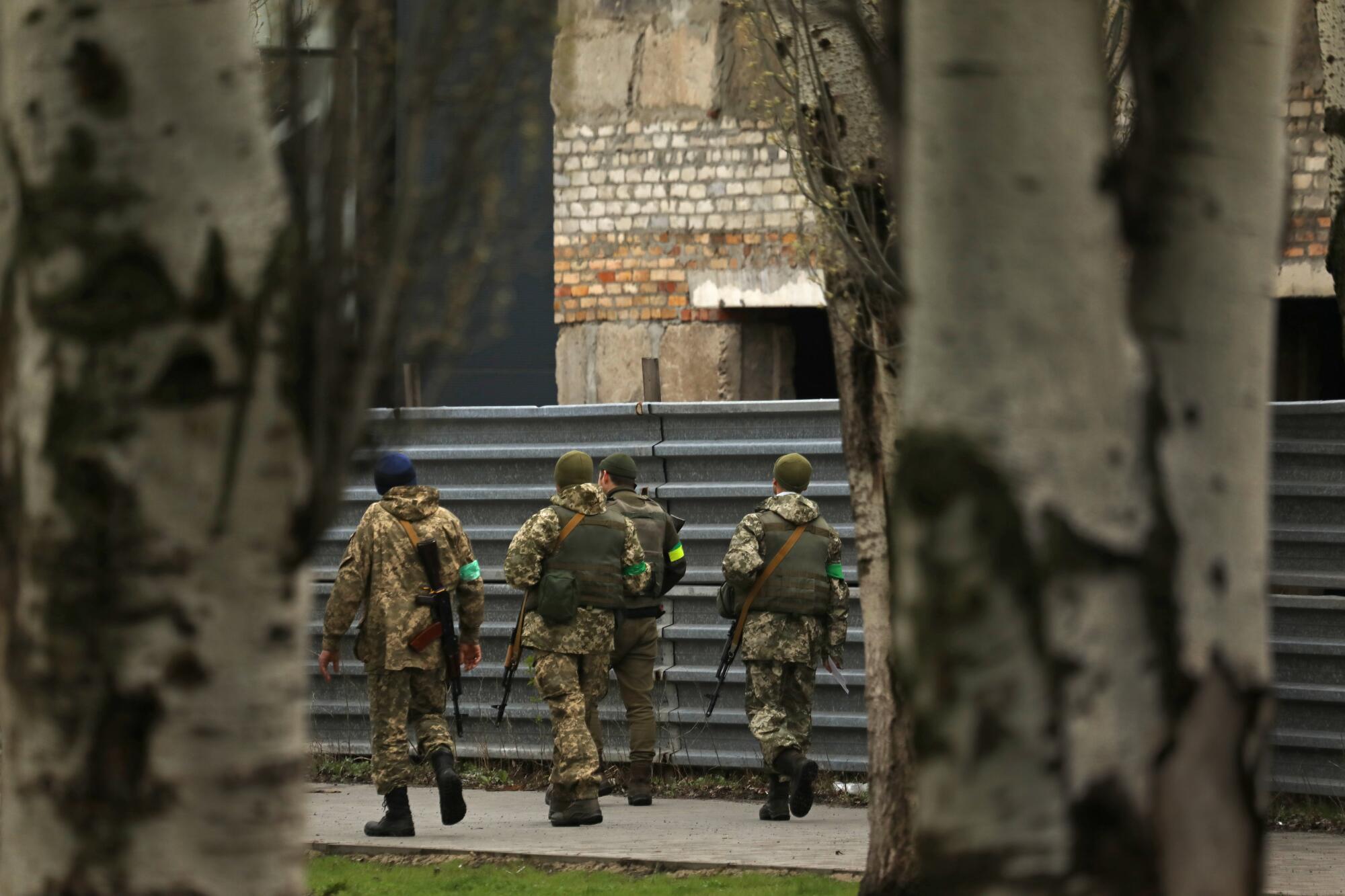
“If we all came, it would be different,” he said, his blue eyes staring steadily ahead. “But my wife is staying to take care of the animals. I worry about her. So many years we lived together, had our life together, and now it’s time to go. How do I feel? I wish I never felt this.”
His gaze faltered; he walked away, his eyes reddening for a moment before he looked at his grandchildren playing off to the side and pulled himself together.
A shell falling near their town a day earlier had spurred the family’s escape. But it was also about the threat of living under Russian-backed separatist rule and the economic evisceration that was sure to follow.
“If Russians come here,” he said, “it will become a dangerous place.”
Their leaving wasn’t a moment too soon: That morning, train service was suspended from Slavyansk after an attack on the railway somewhere to the north and the Russian advance on the city of Barvinkove, 25 miles to the east. Many were also too afraid to go by train after last week’s horrific attack on the station in the nearby city of Kramatorsk.
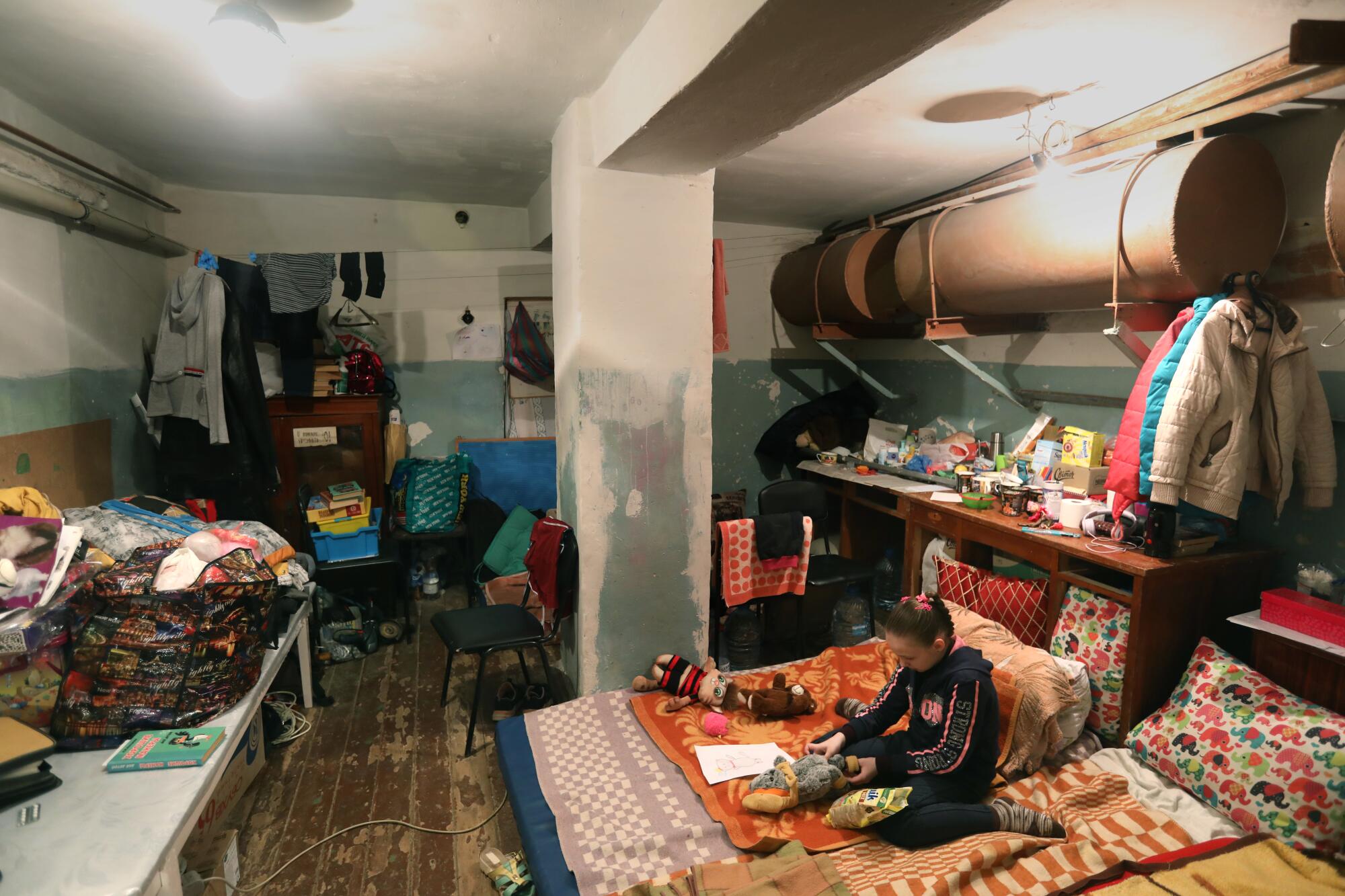
Scenes of departures have become intimate portraits of loss and fear twined into the shared burden of survival.
Near the Slavyansk City Council building, a crowd of 71 people lugged suitcases, overstuffed backpacks and bags toward seven vans that would take them to the western Ukrainian city of Ternopyl. Among them was Dina Zhivilyak, 18. She helped an elderly woman, Lyudmilla Botkovskaya, carry her dog Kashtanka (so named after the dog in the eponymous short story by Anton Chekhov; it means “little chestnut”) to one of the vans before wrestling with her own suitcase.
“I have the essentials here. Clothes I need for the trip, comfortable shoes, documents. And this,” Zhivilyak said, rummaging through her bags before coming up with a ragged-looking teddy bear: a gift from her foster parents when they first brought her from the orphanage.
With most shops shuttered and only a few major grocery stores operating, municipal authorities had taken to dispatching trucks to various parts of the city to distribute aid. One of them parked near Slavyansk’s central square. People queued to receive a bag full of onions and carrots.
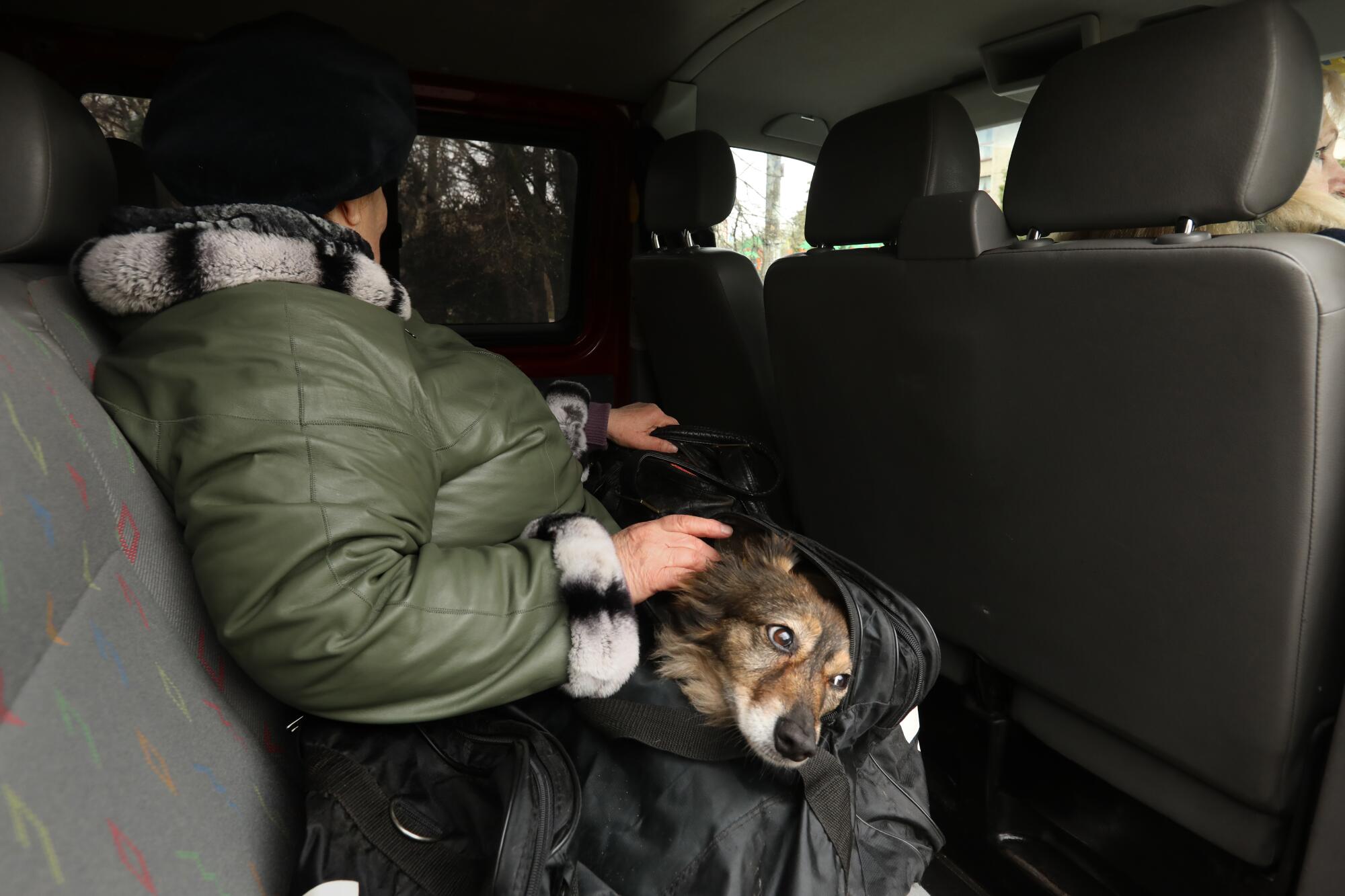
“It’s very hard to get products. Everything is closed. So I’m standing here. I don’t even know what they’re giving out,” said Tanya, a 62-year-old pensioner who gave only her first name for reasons of privacy.
She was staying behind because of her three cats, she said, but had little fear anything would happen.
“I’m an optimist,” she said.
Just as fervent in her belief was Lydia Mychislavena, a caretaker in the city’s Alexander Nevsky church. She lit the candles for the second daily service. A few parishioners came, kneeling and bowing their heads as a priest and two women sang, their voices resonating across the church’s ornate interior.
“In the 2014 war, we stayed. We won’t go now,” said Mychislavena. She recounted how she was getting out of the shower and heard a voice in her head telling her to move to the other room. She did so, and saw shells coming; she prayed, and they flew over her head.
“Our prayer is stronger a million times than the bombs.”
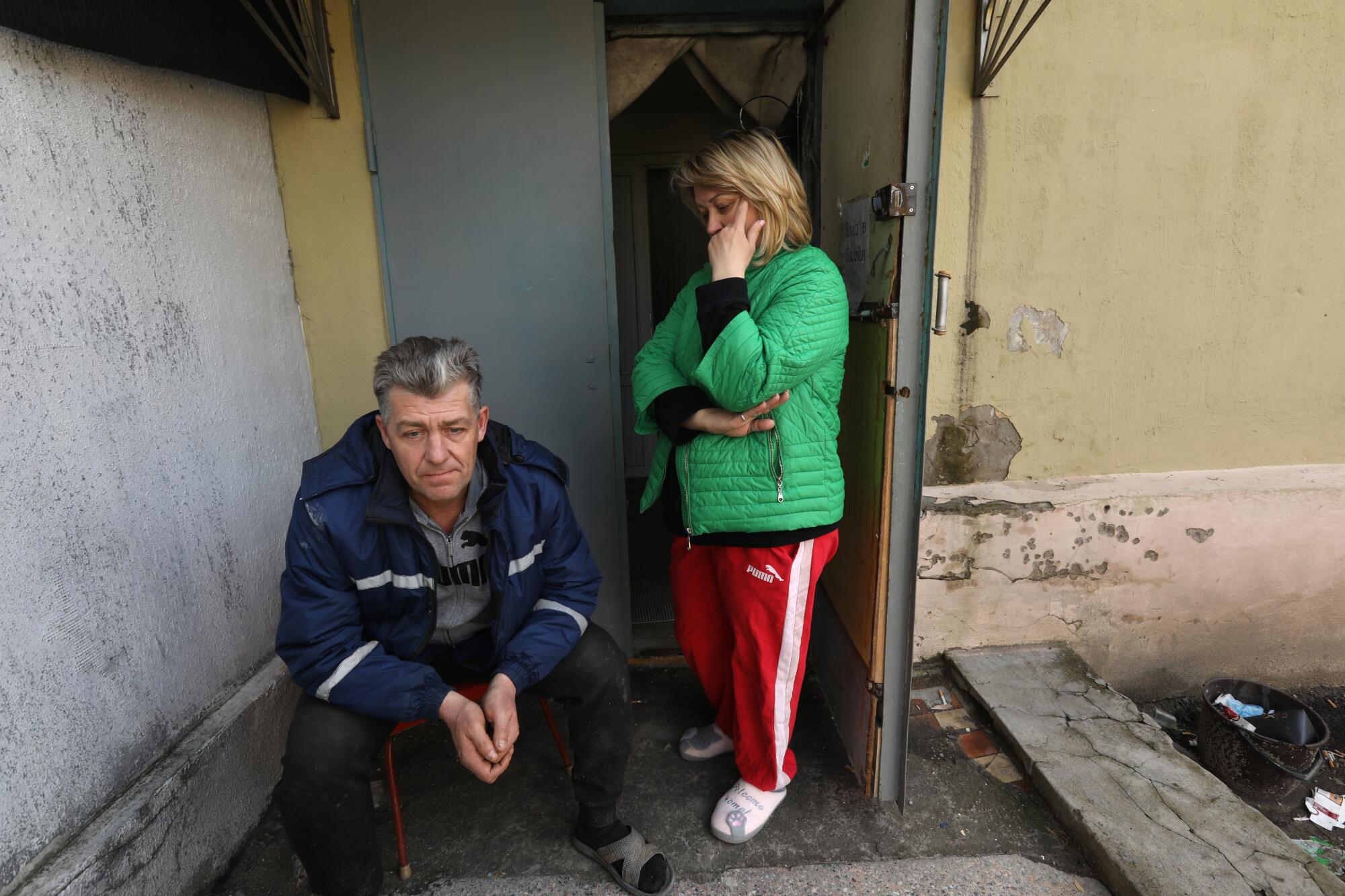
Perhaps not a million, but many bombs have fallen between Slavyansk and Severodonetsk. They have taken lives, roads, shops and animals; they have ripped across fields and leveled buildings. Sergei Zaharolka, the 51-year-old deputy director of the Severodonetsk School, was bunkered with his wife, Lila, and several others at the school.
“The director went away, but I stayed. Where would we go? We want to watch over the school,” said Zaharolka.
They had converted much of the space underground into living quarters, including the school clinic and areas near the indoor swimming pool. Some staff members were assigned to cook food (bean stew, chicken and freshly baked bread). Others would clean or rig solutions to get amenities.
Zaharolka, a handsome man who resembled David Lynch — he believed he looked more like the dancer Mikhail Baryshnikov — did woodwork. The atmosphere seemed less siege than strange camping trip, with two kids playing hide-and-seek in one of the hallways before straying into a boiler room crowded with mattresses, religious icons and belongings.
But all that did little to improve the mood of Natalya, the 44-year-old cleaning lady, who was there with her 9-year-old daughter Alona. She had stayed at the school almost from the beginning of the invasion on Feb. 24. She too had no intention to go, but was terrified of the bedlam happening nearby.
“Only fear. I feel nothing else. Just fear,” she said. She added that Alona understood there was war and wasn’t asking too many questions. Still, when the bombing became too much, “we just sit here and pray.”
Zaharolka walked up the stairs to the school’s outer yard. To the side lay a stack of crosses. Locals had asked him to make them, along with coffins. It was another way he could help, he said, and they would soon be going to the cemetery — a prospect he met with a shrug.
“I’m a carpenter. Some live. Some die. This is life.”
Moments later, an artillery shell landed to the north, striking something that released a dark, angry-looking plume of smoke that rose for miles, darkening the skies above the city.
More to Read
Sign up for Essential California
The most important California stories and recommendations in your inbox every morning.
You may occasionally receive promotional content from the Los Angeles Times.
